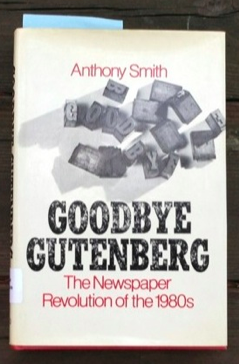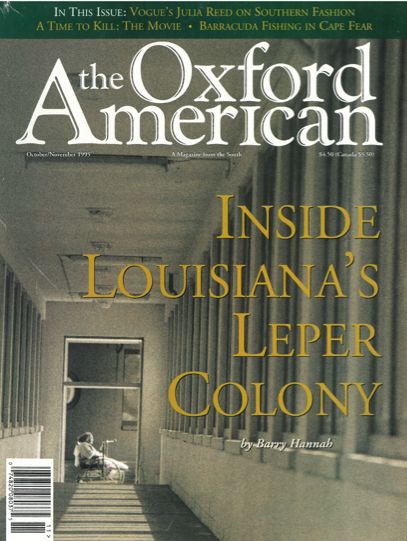Pinned this week for your storytelling pleasure:
The Recommended board has been especially busy:
 • Our sister pub Nieman Lab has been engaging in a little summer reading from our Nieman Foundation library, a treasure trove that spans our 75-year history as the world's oldest and best-known study program for journalists. Ours is “one of the most thorough collections of books about the last century of journalism,” as the Lab puts it. “These books about journalism might be decades old, but in a lot of cases they’re dealing with the same issues journalists are today: how to sustain a news organization, how to remain relevant, and how a vigorous press can help a democracy.” Lab editors and writers are having some fun with it. From Justin Ellis’ piece on The Reporter’s Trade, published in 1958:
• Our sister pub Nieman Lab has been engaging in a little summer reading from our Nieman Foundation library, a treasure trove that spans our 75-year history as the world's oldest and best-known study program for journalists. Ours is “one of the most thorough collections of books about the last century of journalism,” as the Lab puts it. “These books about journalism might be decades old, but in a lot of cases they’re dealing with the same issues journalists are today: how to sustain a news organization, how to remain relevant, and how a vigorous press can help a democracy.” Lab editors and writers are having some fun with it. From Justin Ellis’ piece on The Reporter’s Trade, published in 1958:
And from Linda Kinstler’s piece on The Southern Country Editor, published in 1948:
 • All hail any nonfiction (or fiction, for that matter) by the late Barry Hannah, especially a piece about a Louisiana leper colony. An excerpt from “Old Terror, New Hearts,” resurrected online by The Oxford American:
• All hail any nonfiction (or fiction, for that matter) by the late Barry Hannah, especially a piece about a Louisiana leper colony. An excerpt from “Old Terror, New Hearts,” resurrected online by The Oxford American:
• Have a look at this six-minute animated vid on empathy, neurochemistry and the dramatic arc, by "neuroeconomist" Paul Zak, from the Future of Storytelling 2012. Zak has studied how narratives that trigger distress and empathy can change behavior by altering brain chemistry. Researchers showed participants two cartoon videos: one of a father and his terminally ill young son interacting, with the knowledge that the son will die; and a second video of father and son walking through a zoo. The first video prompted strong neurological response from viewers; the second: crickets. “Nothing happens, and people just blank out," the video explains. "There’s no reason for them to attend to this information because nothing’s happening. There’s nothing exciting.” This goes to a tenet of narrative journalism, which holds that tension, conflict, and situational stakes make story. And it calls to mind the great Flannery O’Connor quote, “If nothing happened, there’s no story.”
• “Elegy of a Race Car Driver,” by Jeremy Markovich, of SB Nation, is a beautifully told story about stock car star Dick Trickle and his shocking death. Excerpt:
• If you enjoyed our recent live chat with Jeff Sharlet and Leslie Jamison on the state of literary journalism, check out Jamison’s examination of the essayists Rebecca Solnit and Michelle Orange in “What Should an Essay Do?” in The New Republic. Excerpt:
• Chris Jones, in ESPN The Magazine, wrote about the Japanese pitcher Tomohiro Anraku and his epic training (at the high school tournament Koshien, he has thrown in nine days as many pitches as the average major leaguer does in six weeks):
And hey! We've got a new board, featuring our popular “Why’s this so good?” series. You'll find Wesley Morris on Nora Ephron, Gwen Thompkins on Dan Barry, Jennifer B. McDonald on Joan Didion, Ann Friedman on John Jeremiah Sullivan, Adam Hochschild on John McPhee, Pam Colloff on David Grann, Eva Holland on Jonathan Lethem, Jason Schwartz on Charlie Pierce, Joe Keohane on Dan P. Lee, with more arriving all the time.
Happy weekend reading!
The Recommended board has been especially busy:
 • Our sister pub Nieman Lab has been engaging in a little summer reading from our Nieman Foundation library, a treasure trove that spans our 75-year history as the world's oldest and best-known study program for journalists. Ours is “one of the most thorough collections of books about the last century of journalism,” as the Lab puts it. “These books about journalism might be decades old, but in a lot of cases they’re dealing with the same issues journalists are today: how to sustain a news organization, how to remain relevant, and how a vigorous press can help a democracy.” Lab editors and writers are having some fun with it. From Justin Ellis’ piece on The Reporter’s Trade, published in 1958:
• Our sister pub Nieman Lab has been engaging in a little summer reading from our Nieman Foundation library, a treasure trove that spans our 75-year history as the world's oldest and best-known study program for journalists. Ours is “one of the most thorough collections of books about the last century of journalism,” as the Lab puts it. “These books about journalism might be decades old, but in a lot of cases they’re dealing with the same issues journalists are today: how to sustain a news organization, how to remain relevant, and how a vigorous press can help a democracy.” Lab editors and writers are having some fun with it. From Justin Ellis’ piece on The Reporter’s Trade, published in 1958:The Reporter’s Trade has the feel of a Hardy Boys adventure, if instead of investigating small-town jewel thieves, Frank and Joe Hardy traveled to global capitals, attended state dinners, and had a creeping suspicion about the Communist threat.
Written in 1958 by sibling newspaper columnists Joseph and Stewart Alsop, The Reporter’s Trade follows in the long tradition of journalism memoirs that mash-up biography and bibliography, with charming tales and a healthy dose of D.C. name-dropping.
And from Linda Kinstler’s piece on The Southern Country Editor, published in 1948:
Thomas D. Clark’s 1948 book tells the story of how small weekly papers in the rural South adapted to a rapidly changing nation at the turn of the century, as new roads and big city dailies connected disparate, antagonistic parts of the country. Newspapers helped usher people through the chaos of Reconstruction; there were 182 country newspapers at the end of the Civil War, 499 three years later in 1868, and 1,827 by 1885. “By 1869 it was evident that the country editors were giving the common man a vital part in the rebirth of the region,” Clark writes.
 • All hail any nonfiction (or fiction, for that matter) by the late Barry Hannah, especially a piece about a Louisiana leper colony. An excerpt from “Old Terror, New Hearts,” resurrected online by The Oxford American:
• All hail any nonfiction (or fiction, for that matter) by the late Barry Hannah, especially a piece about a Louisiana leper colony. An excerpt from “Old Terror, New Hearts,” resurrected online by The Oxford American:Man loves to fight, must fight, must do, must conquer a day or lie shiftless, moaning and feckless beneath it. Many have felt this, a marching band within them pouring to each head. Stein was such a one. He went blind in the '40s, but, hell, there was a war on and he began The Star right in Carville, the single organ most responsible for winning the war against the black ignorant prejudice that reigned six thousand years. Few Jews were afflicted, yet Stanley Stein absorbed this dreadful luck and then went racing with all his humanity against it. In this little paper, eventually distributed worldwide, he led the crusade to change the horrific leprosy to Hansen's Disease, a correction beyond lexical niceties for Stein and his friends who pointed out that what they had was not biblical leprosy at all. They were right, but have been met with resistance by the Encyclopaedia Brittanica and many in the medical establishment itself. When his own light failed, Stein merely changed instruments and picked up another sword. Helen Keller visited. Hearing was the best organ anyway, she told them. Or was it touch? Whatever you had left was best. As the old pilots used to say: Fly the biggest piece back. His other crusades were to bring theater, dances and other celebrations of life to a place void of much beyond the need of zombies, it seemed to him. Stein died at Carville in 1967 while his friends were waiting on him for more advice. Stein's book, you might note, reads like a '30s detective chiller, full of dead-end terror in the mean streets of Leperville. Our man, mightily unbroken, still calls out through the surviving Star, named for his little town newspaper in Texas. Stein's name is repeated with more than reverence by the denizens of Carville, and there is a street named for him near the gate. More than a saint, he was a friend.
• Have a look at this six-minute animated vid on empathy, neurochemistry and the dramatic arc, by "neuroeconomist" Paul Zak, from the Future of Storytelling 2012. Zak has studied how narratives that trigger distress and empathy can change behavior by altering brain chemistry. Researchers showed participants two cartoon videos: one of a father and his terminally ill young son interacting, with the knowledge that the son will die; and a second video of father and son walking through a zoo. The first video prompted strong neurological response from viewers; the second: crickets. “Nothing happens, and people just blank out," the video explains. "There’s no reason for them to attend to this information because nothing’s happening. There’s nothing exciting.” This goes to a tenet of narrative journalism, which holds that tension, conflict, and situational stakes make story. And it calls to mind the great Flannery O’Connor quote, “If nothing happened, there’s no story.”
• “Elegy of a Race Car Driver,” by Jeremy Markovich, of SB Nation, is a beautifully told story about stock car star Dick Trickle and his shocking death. Excerpt:
The suicide. That didn't seem like Dick at all. People who knew Dick had heard something was wrong. A lot of them weren't sure what it was. Kenny asked Darlene if she'd seen this coming. No. She had no idea anything was wrong until a Lincoln County sheriff's deputy pulled into her driveway on Thursday afternoon.
After Dick shot himself, Chad called Kenny. Darlene wants you at the funeral, he said. "You know," he said next, "we're all big Kenny Wallace fans." That sounded like a Dick Trickle call. There weren't many short phone conversations between Kenny and Dick. If the phone would ring and Dick's name was on the caller ID, Kenny would think twice about answering if he didn't have an hour to talk. But they still talked all the time. Dick was still giving him advice. Back in 2011, Kenny called to talk about his new Nationwide Series race team. He told Dick he'd lost some weight. He was ready. You've got a new car now, Dick told him. Do not change your driving. Let the car do the work for you. Kenny had 11 top 10s and finished seventh in points, his best showing in years.
The calls started to slow down. Kenny wasn't sure why. Dick really didn't talk about it. In 2011, Kenny's father, Russ, an old-school racer who won a lot around St. Louis, died at age 77. Your dad lived a great life, Dick said. He was in pain, but he's fine now. Dick could justify anything, but Kenny thought it was odd how quickly he'd made sense of his father's death.
After Dick's funeral, Kenny had an idea. "Darlene, maybe we should make some T-shirts," Kenny said. New ones. With Dick Trickle's name on the front. Just something so his fans could remember.
"Nope," she said. "We're done."
• If you enjoyed our recent live chat with Jeff Sharlet and Leslie Jamison on the state of literary journalism, check out Jamison’s examination of the essayists Rebecca Solnit and Michelle Orange in “What Should an Essay Do?” in The New Republic. Excerpt:
Both writers use metaphor to beckon the faraway closer, fashioning linkages between seemingly distant objects: frozen meat and narrative, psychiatry and warfare, cannibalism and song. Both take up the collage mode with particular ferocity, not only juxtaposing faraway abstractions with proximate materials, but implicitly insisting on associative glue as a substitute for narrative spine. Instead of telling the straight story of memoir, they say: This is the story of how my mind moves. Both claim the prerogative of juxtaposition. They engage the structure of fugue and kaleidoscopes and echolocation. They circle vast arrays of artifacts in hopes that these artifacts might share their secrets, and that the distortions of their Chinese whispering might hold promise.
• Chris Jones, in ESPN The Magazine, wrote about the Japanese pitcher Tomohiro Anraku and his epic training (at the high school tournament Koshien, he has thrown in nine days as many pitches as the average major leaguer does in six weeks):
Saito nodded to his catcher. He was about to throw his 942nd pitch of the tournament, on his way to a modern record. Tanaka had thrown 742 pitches. If the moment weren't so touching, so inspiring, if it didn't leave the boys watching it from their dugouts in tears, it would have been inhumane. Maybe it still was.
942. Fouled back for a strike.
943. Swinging strike.
944. Chopped foul.
945. High and outside. Ball one.
946. Fouled back again.
947. Fouled down the third base line.
And then, at last: 948. Tanaka struck out, swing and a miss.
Saito lifted what was left of his arms into the air. Because he was small, and because he looked as though he'd been broken, he wasn't deemed a kaibutsu. There is more to the title than endurance, than simple suffering. A true kaibutsu inspires fear as well as awe. A true kaibutsu doesn't get damaged. He does the damage.
And hey! We've got a new board, featuring our popular “Why’s this so good?” series. You'll find Wesley Morris on Nora Ephron, Gwen Thompkins on Dan Barry, Jennifer B. McDonald on Joan Didion, Ann Friedman on John Jeremiah Sullivan, Adam Hochschild on John McPhee, Pam Colloff on David Grann, Eva Holland on Jonathan Lethem, Jason Schwartz on Charlie Pierce, Joe Keohane on Dan P. Lee, with more arriving all the time.
Happy weekend reading!


